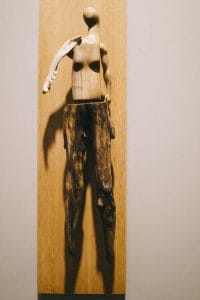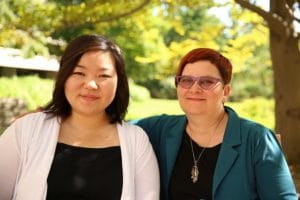Karen Young is a Web Writer with the Centre of Teaching Support & Innovation with the summer 2016 work study program, a fifth year student at the University of Toronto Scarborough (UTSC), and the Founder and Editor-in-Chief at Minds Matter Magazine (MMM). MMM is a community platform focusing on student perspectives so we can all think, talk, and take action on matters related to mental health.
Nancy Johnston is an Associate Professor, Teaching Stream in the Women’s and Gender Studies department at UTSC and is also an Associate Director with the Centre for Teaching and Learning. She is a new member of the advisory team with MMM.
Johnston invited the MMM team – made up of diverse academic, gender, and ethnic backgrounds – to speak in her course, WSTC40H3Y: Gender & Disability, during a session on mental health and advocacy. The team started by introducing the magazine’s mission and their own personal connections to mental health, sharing academic research on the definitions of stigma, their lived experiences navigating professional supports and strategies, practical advice, and in-house MMM resources. Jeffrey Dvorkin, UTSC-Centennial College journalism program director and MMM advisor, and Nancy Johnston supplemented the discussion.
MMM Team reactions to this teaching experience
- Sadiah Mussarrat (MMM Guest Speaker): The students were very spontaneous to raise analytical and well thought questions and opinions on student mental health, the role of gender and disability. It is indeed interesting to see how this course inspired them to identify the gender barriers for students with mental disability and address these issues.
- Ioana Arbone (MMM Journalist): I was amazed at the class’ interest and students’ response to the personal experience that one of the panel members shared. I can see the course sensitized them to mental health, gender, and disability issues.
- Ary Maharaj (MMM Team Lead): It was really fun to engage in peer-to-peer learning with the students in Professor Johnston’s class. I learned a lot about how others view the work that we do at MMM, and felt that the genuine discussions we were having about mental health and disability went beyond the content and included our experiences. I believe that co-learning experiences should be prioritized as a way to ‘reinvent undergraduate education’.
- Anastacia Jiang (MMM Marketing Strategist): I have always found courses that allow opportunity for conversation and discussion to be most beneficial to students—Professor Johnston’s class does exactly that—I felt that everyone was really engaged and interested in the topics; that made it very comfortable and easy for me to speak out about my personal experiences.
The following is an edited version of a post-class interview between Young and Johnston.
Young: Can you tell me more about the history of your course?
Johnston: I designed my course, Gender and Disability, in 2010 as an introduction to disability advocacy and justice, with an intersectional perspective on representation, rights and research.
In the past few years, I’ve expanded my knowledge in this field by consulting with colleagues, attending advocacy and arts events, and it reflects my passion for disability justice issues and disability art.
Young: What were students primed with before engaging into the peer-based discussion?
Johnston: I tried to integrate issues about mental health throughout course rather than limited to one week. Students have been reading articles on identity and perspectives on mental health by refugee and immigrant women, as well as Bradley’s history of Mad Pride. They were invited to an optional gallery talk by Eliza Chandler at The Tangled Arts Gallery of Persimmon Blackbridge’s new sculpture show, Constructed Identities.
Tangled Art / Photo by Kathy Toth, 2016
Young: What is your pedagogical approach?
Johnston: Because of my writing centre work, I’m interested in encouraging student personal reflection and expressive writing as a tool for learning, and offering opportunities to experience the voices of people with disabilities, as writers or as participants in interviews. I look for research and magazine articles that include the voices of marginalized people and present current issues. For this course, I have chosen academic texts by well-known disability scholars as well as an auto-ethnography, OP/ED articles, documentaries, and news media. The combination allows a richer engagement by students who can apply the theoretical ideas from academic texts to cases and current issues.
Young: What are some of your reflections of the outcomes of the discussion between the MMM team and your students?
Johnston: I was excited to have the team as I saw it as an opportunity for my students to see their own potential. I wanted to encourage my students to hear from young UTSC student writers with emerging voices and perspectives on mental health. Many of my students have ambitions to work in the fields of policy, social work, and mental health, but perhaps don’t see themselves in that path. Students were engaged in the discussion; several quieter students spoke at length to give opinions about a current media case. It was exciting to hear breadth of opinions. Although it happens in my classes, I’d say they could connect more, especially in the personal stories share.
Johnston: How was this experience an unusual student experience?
Young: The wonder of supporting each other in classroom as students, but from a co-teaching perspective as opposed to a co-learning one. For me a student leader, I was most concerned about ensuring that everyone in our student team were enabled with the confidence, tools, and information to present their parts as comfortably as possible. This was our first experience as a student group in coming together, supporting each other, in offering content for a course we would normally pay for! We all recognized the risks of opening the conversation to such a sensitive topic like student mental health and interdependently ensured that everyone was collectively taken care of. This required the dynamic trust among all of us—the class, yourself, ourselves.
Johnston: I understand that your magazine format could have been a student journal with an academic focus. Why have you taken a more popular form of the magazine?
Young: In order for students to actively engage with ideas across disciplines, it needs to be in a lucid format for any student at any point of their career. Once students are included as readers, students can actively co-create knowledge openly for the public’s access to the worldwide web. Written in a popular format does not reduce any student magazine’s academic positionality within the university. The process of researching, aggregating, critically engaging with ideas, editing, and disseminating the information into layperson readability synthesizes the skills we are mandated to learn at the U of T.
Johnston: What are some of the other initiatives that MMM has undertaken? I’m interested in how it’s not only an academic source but also a community resource. Why has this been a mandate?
Young: One initiative introduced in the class visit was our resource navigator for students to access UTSC/U of T resources to address student-centred concerns. As a knowledge creator, we produce information highly influenced by our academic positioning but also to help students make informed decisions. It’s interesting the way you framed your question, being an academic source first. Many interpret our identity as a community resource in directly tackling campus mental health issues first and foremost. Our multifaceted advocacy and social justice work likely reflects the multifaceted identities of the university as an institution.
Johnston: When you were invited with the class to the optional gallery talk by Eliza Chandler at The Tangled Arts Gallery of Persimmon Blackbridge’s new sculpture show, Constructed Identities, how did it augment your understanding of disability prior to the co-teaching session with MMM?
Young: As a student, I appreciated the awareness of disability, gender, and art was extended beyond the course, animating such topics as broader than existing only in the academic context. I was excited to learn that the Gallery opened its doors for the first time at the same time the course was happening. The coinciding of both the timing of the exhibit and the duration of this course hit this idea home for me—the enriching of learning by situating our academic understandings of disability into the broader life of city. As a student presenter, I was interested in understanding a bit more on the nature of ideas explored in this course. The demand for the creation Ontario’s first fully accessible art gallery dedicated to exhibiting Disability and Deaf Art is especially demonstrated in one particular sculpture. Initially, Persimmon Blackbridge’s exhibit was meant for visual experience and appreciation. Eventually, the demand for a touchable piece led Persimmon Blackbridge to create a tactile piece. This made me think about the social construction of the finite number of voices that we can elevate into conversations on disability as a human right. With the artist self-identifying as a ‘mad person’, it drew in personal excitement to explore connections with mental health and arts as our next MMM issue’s theme is on the arts.
Photo by Mark McKee, 2016
All U of T students, alumni, staff, and faculty are invited to get involved with MMM. Visit the Minds Matter Magazine site to pitch ideas for creative collaboration.
Special thanks to Sean Lee (also UTSC alumni) from Tangled Arts Gallery for assisting with the exhibit image and links.

























